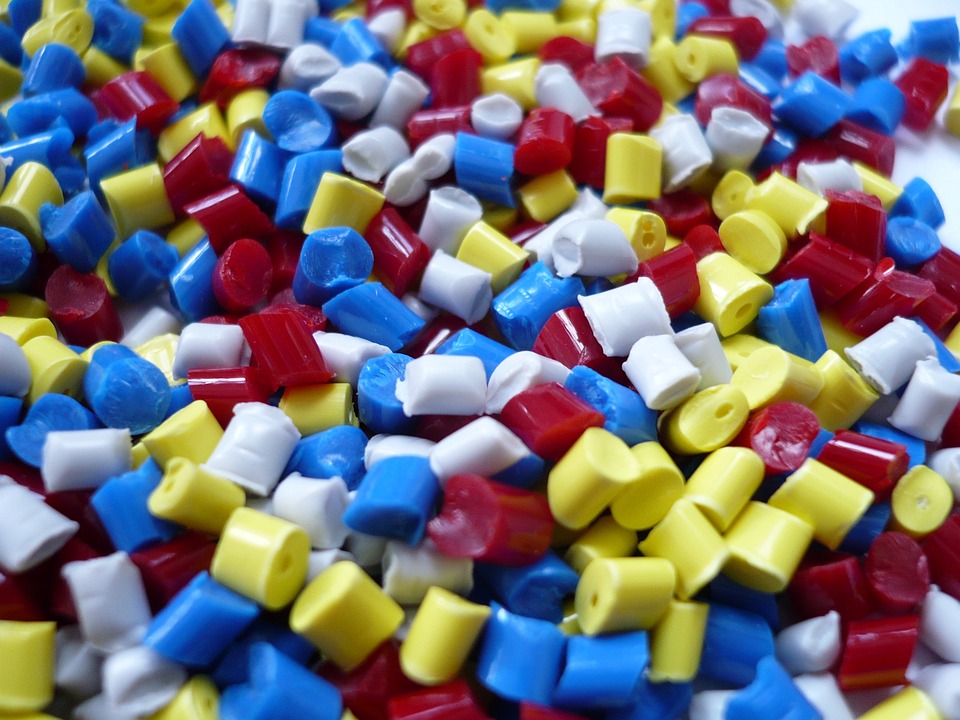Enzymes are known as natural or biological catalysts, which help fasten or slow down the rate of chemical reactions.
While polymers are macromolecules formed by the covalent bonding of smaller molecules called monomers.
They are amino acids that are linked together through some peptide bonds to create a single protein chain. Then this chain folds into a specific three-dimensional structure, which is responsible for the various enzymatic functions.
Enzymes are very important; hence, they play a principal role in biological processes, like metabolism, DNA replication, and protein synthesis.
What primarily does is catalyze or speed up chemical reactions in living organisms, they are also building blocks.
However, note that each enzyme has its own specific substrate (the molecule it acts upon), a suitable temperature and pH range for its activity.
Are Enzymes Polymers?

Are enzymes polymers? The answer is Yes. They are polymers and are made up of solely amino acids, hence are also known as proteins.
Structures of Enzymes
Structure of enzymes can be classified into four main types;
1. fibrous
2. Globular
3. Membrane
4. Metalloenzymes.
The amino acid sequence is encoded by the DNA and is translated by the ribosome. It helps to dictate the enzyme’s unique attributes.
Although, there are changes atimes in the amino acid sequence and this can lead to some variations in the enzymatic activity, stability, or its specificity.
Types of Polymers
There are several types of polymers, which can be classified based on their structure, formation process, or properties. Here is a list of some of the main types polymers;
1. Natural Polymers
These polymers are naturally found and they include proteins like;
1. Nucleic acids (DNA and RNA)
2. Polysaccharides (such as cellulose, starch, and glycogen).
These polymers exist naturally and are hence called biopolymers. They have some essential biological functions, like providing structural support, storing energy, and carrying genetic information in a living cell.
2. Synthetic Polymers
These are polymers that are man made. They are mostly created through chemical reactions like polymerization. They can be classified into two categories:
a. Addition Polymers (Chain-Growth Polymers)
These are polymers that are formed by the addition of monomers to a growing chain. This type of chai growth will not cause the formation of any small molecules, such as water or methane.
Polyethylene, polypropylene, and polystyrene are some examples of additional polymers.
b. Condensation Polymers (Step-Growth Polymers)
They are formed when there is some kind of reaction between monomers. This kind of reaction results in the elimination of small molecules like water, methane, or hydrogen chloride. Some examples include polyesters, polyamides (nylons), and polyurethanes.
3. Copolymers
Another type of polymers are copolymers which are polymers composed of more than one type of monomer unit. These type of polymers can be classified into two types;
a. Random Copolymers
In this type of polymer chain, monomers are randomly arranged along the chain, with no exact pattern. Some examples are;
1. Polyethylene-co-vinyl acetate (EVA)
2. Polyethylene-co-propylene (EPR).
b. Block Copolymers
In this copolymer, there are long sequences of different monomers arranged in a linear, alternating pattern. Some known examples are;
1. Poly(styrene-b-butadiene)
2. Poly(ethylene oxide-b-propylene oxide).
4. Cross-Linked Polymers
Cross-linked copolymers are polymers with covalent bonds between the chains that result in singular network structure. This cross-linking increases the polymer’s values in the following field;
1. Mechanical strength
2. Dimensional stability
3. Resistance to solvents
4. Resistance to heat.
Some known examples are rubber, some plastics, and hydrogels.
5. Elastomers
Next are polymers that have a high elasticity limit and can easily come back to their original state after deformation. These types of polymers are used in various applications, like in rubber tires, erasers, and medical implants production.
Some examples include;
1. Natural rubber
2. Polyisoprene
3. Silicone rubber.
Types of Enzymes
Based on their functions, their sources and the type of reaction they catalyze, enzymes can be classified into various categories.
And so that you understand why enzymes are polymers, we will share more on some popular enzymes based on their function in metabolic pathways.
1. Transferases
They help to transfer functional groups from one molecule to another molecule. One popular example is that of DNA polymerase, that adds nucleotides to a growing DNA strand during the process of replication. Likewise also, transaminases transfer amino groups between different molecules.
2. Oxidoreductases
Next is oxidoreductase. These are enzymes that help to catalyze oxidation reduction reactions. Furthermore, there is always a transfer of electrons from one molecule to another in the process.
For example, cytochrome c oxidase are enzymes that play a vital role in cellular respiration, and catalase breaks down hydrogen peroxide into water and oxygen.
3. Hydrolases
Hydrolases are enzymes that catalyze the hydrolysis of various bonds like;
1. Peptide bonds
2. Glycosidic bonds
3. Ester bonds.
An example of hydrolases is amylase. It is responsible for breaking down starch in the digestive system. And another is trypsin, which helps in the breaking down of proteins in the stomach.
4. Lyases
Another type is Lyases, that help to catalyze the cleavage of bonds by non-hydrolytic and non-oxidative mechanisms.
Lyases are further classified into two categories; those that require a cofactor (like ADP-ribose in ADP-ribosylation) and those that do not.
One example of a lyase is pyrimidine 5′-nucleotidase. They catalyze the hydrolysis of the phosphoric acid residue in nucleotides.
5. Isomerases
Isomerases are enzymes that help to break down the interconversion of isomers. They are enzymes that break down molecules with the same molecular formula but different arrangements of atoms.
Invertase, for example helps convert sucrose into glucose and fructose. Another is DNA repair enzymes like DNA photolyase which help maintain the form of the DNA structure by repairing thymine dimers which areas caused by UV light exposure.
6. Ligases (Syntheses)
Ligases are synthases that catalyze the formation of new bonds between molecules by coupling the hydrolysis of ATP or GTP.
For example, RNA polymerase is responsible for synthesizing RNA from DNA templates during transcription. DNA ligase helps seal nicks in the DNA strand during replication.
These different types of enzymes play quite an essential role in maintaining the proper functioning of cells and the organisms’ wellbeing.
They are involved in various metabolic pathways, which involve the efficient breakdown and synthesis of molecules required for life processes.
Conclusion
Enzymes are indeed polymers, specifically proteins, which are composed of a long chain of amino acids. Their polymeric nature is important for their structure, their function, and their biological roles.




